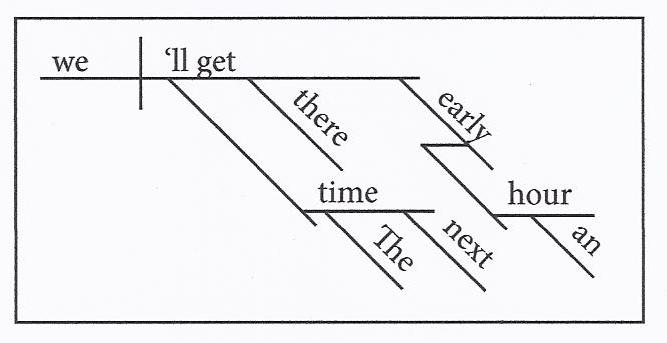| Adverbial
objectives are nouns and pronouns that function as adverbs. Adverbial
objectives can express time when (at what time), extent of time (how
long), location (place where), destination (place to which), direction,
manner (how), value, weight, and quantity, among other things. They modify
verbs, adjectives, adverbs, and even prepositions. Here are two examples
of adverbial objectives that modify verbs (adverbial objectives are
underlined): 1) "I hope it
snows all day" (the adverbial objective day with its
modifier expresses
extent of time); 2) "He always wants to do things his own way"
(the adverbial objective way with its modifiers expresses manner). Here
are two examples of adverbial objectives that modify words other than
verbs: 1) "A football
field is 160 feet wide" (the adverbial objective feet
modifies the predicate adjective wide); 2) "I
plan to leave about an hour after dinner" (the
adverbial objective hour modifies the preposition after).
Contractions involving a
subject and a verb, e.g., I'm, she's, they'll, who's, that's, are
separated in diagrams. Contractions involving a verb and the adverb not,
e.g., don't, wouldn't, wasn't, are not separated.
As
you make your way through these flashcards, you may wish to refer to a
section of my website that deals with terminology, www.german-latin-english.com/diagrammingterms.htm. |
| On the right is a diagram of the sentence "The
next time we'll get there an hour early." The words time and hour
are adverbial objectives. They modify the verb will get
and the adverb early, respectively. The article the and the
adjective next modify time; the article an modifies hour.
There is an adverb. |
 |
The structure on which an adverbial
objective is diagrammed
is the same as the structure on which an indirect object is diagrammed.*
When the adverbial objective modifies an attributive adjective, an adverb,
or a preposition, its structure must be hooked onto the diagonal line of
the adjective, adverb, or preposition that it modifies. Flashcard
9: imperatives and vocatives. |
*
Strictly speaking, indirect objects are adverbial objectives. As you know,
they indicate the person (or the sentient being like a dog or a cat) to
whom something is given, said, or shown, or for whom something is done (Will
you sing us a song?), and they modify verbs.
Return
to flashcard list
|
